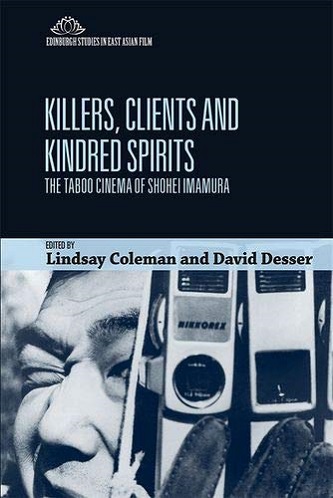‘Why Not? – Imamura, Nietzsche, and the Untimely’

Clients, Killers and Kindred Spirits: The Taboo Cinema of Shohei Imamura
Eds. Lindsay Colman and David Desser
Edinburgh University Press, 2019
They come, dancing, singing: the women and men of East Ryogoku. Hundreds upon hundreds of people, in crazy costume and outlandish makeup: filthy beggars careering, lustful demons carousing, men dressed as clowns and as women, women dressed as men or bare-breasted. From all corners of the entertainment district of Edo: show-folk, thieves, pimps, whores, laborers, vagabonds. They chant the refrain “ee ja nai ka” (“Why not?” or “We don’t care!” or even “What the hell!”). Such is the image of anarchy at the climax of Shohei Imamura’s cinematic period epic Eijanaika / Why Not? (1981).
The purpose of this chapter is to interrogate Imamura’s cinematic exploitation of the past in the context of his disruptive filmic praxis. To do so, I employ Friedrich Nietzsche’s philosophy of history in the early foundational essay entitled ‘On the Uses and Abuses of History for Life’ (1874). Nietzsche’s philosophy affirms discord, disjunction, and dissonance pre-echoing Imamura’s disruptive cinematic praxis; and Nietzsche’s philosophy of history — so I claim — will thus allow an interrogation of the eijanaika event in Why Not? as the ungrounding of history: the untimely.
Essay available to read for free on Academia.edu >>>
Also available from Edinburgh University Press